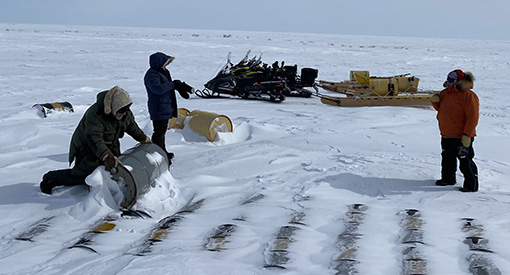LeeAnn Fishback on wayfinding
Wapusk National Park
To help put the sheer size of Wapusk in perspective, at 11,475 square kilometres, the park is over 500 square kilometres larger than the entire island country of Jamaica. That's a lot of tundra to cover.
And yet, some of LeeAnn Fishback's fondest memories of Wapusk involve getting stuck in the snow in the dead of winter.
"The snow on the tundra is hard like concrete. A lot of people think a snow machine ride is smooth, but it's actually quite rough," says LeeAnn, Resource Conservation Manager for Parks Canada.
"We spent 36 hours stuck in a snowbank once. I mean, you're never really stuck, it just means you have to shovel a lot, and I feel like I shoveled half the snow in Wapusk by now."
A single freight haul trip can take days, with stops at fuel caches and fenced-in compounds. There's nothing in the way of sustenance when you get there, so you're taking all your food, water and survival equipment with you.

"Ironically, you're not trying to keep your food cool; you're trying to keep it warm. If they're packed well, you might be able to have fried eggs, but the bumpy ride can quickly mean you're having them scrambled instead," LeeAnn explains.
Travelling through the park, researchers rely heavily on a handful of fixed landmarks to keep them from getting lost.
"Some of those landmarks are like old friends. There are a handful of trees we call 'palm trees', where the bottoms are stripped off and only the tops remain. They've been marked like this long ago with the intention being for people to find their way back,” LeeAnn says.
"Being able to travel through the park this way brings a lot of memories back every time I go, whether it's a clump of willows, or a creek crossing I've fallen through once before.
"These trails and wayfinding methods in the park are all very interesting to me," adds LeeAnn. "It's just such a beautiful place."
- Date modified :